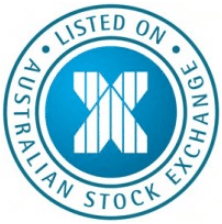
With almost every central bank in the G10 currency space in a wait-and-see mode, China once again stands out, with USD/CNY right in the crosshairs again.
News flow seems slow in most other locations and while there are a number of political issues at hand, they don’t seem to be causing any real uncertainty. A simple look at the US volatility index (VIX) indicates a real lack of panic; it fell 4% yesterday to 13.67%, while in the forex market EUR/USD (one-month) volatility is at 15% discount to the one-year average. Even implied volatility around USD/CNH (offshore Rinminbi) is at the lowest levels in months and hasn’t moved with the significant rally in USD/CNH and USD/CNY.
Another failed break on the S&P 500
The bears will be pointing to the second failed break in as many nights of the recent high of 1850, while number oscillators are crossing lower. The prospect of a pullback seems to be growing, although whether that is on the current news flow is debatable. Given we are coming to the tail end of earnings season, the question is what will be the catalyst for which the bulls will cling to from here?
It doesn’t happen very often, but it seems Asia-based traders seem much more lively than European or US-based traders right now – at least from a forex point of view. There seems more volatility in AUD/USD, USD/JPY and USD/CNY than the other key majors, and while USD/CNY is being used as a policy tool by the PBoC to control hot money inflows through the creation of much better two way volatility, USD/JPY and AUD/USD are likely to be thrown around in its wake. We can expect this volatility to continue ahead of the National People’s Congress (NPC) on March 5, where many feel a number of the reforms from the November Third Plenum will be more formally approved.
AUD/USD has taken a hit today and it clearly wasn’t a USD related move, given AUD fell across the curve. Today’s Q4 construction work done fell 1% quarter-on-quarter, with the consensus calling for growth of 0.2%. Importantly, components related to capex were fairly poor and this comes before tomorrow’s Australian Q4 capex private capital expenditure, although more importantly will be the initial estimate of business capex plans for 2014 to 2015.
Many will question the reliability of this read, as naturally it will be revised a number of times, however any reading here needs to be measured against the 2013 to 2014 read of A$152 billion. Any number below A$137 billion should cause a reasonable weakening of the AUD, as the market is priced for a 10% decline here. On the other side of the scale a number above a$145 billion should see a rally materialise in AUD, given this is half of what is expected.
In equity land the ASX 200 has found modest buying today, with the index up 0.1%. The CSI 300 in China found some buyers after a weaker open, however price action here remains shaky. Looking at the China A50 cash index, which is one of the few markets non-residents can trade, it needs to close back above 6600 (currently at 6511). The prospect of this happening anytime soon seems low, with a number of momentum-focused oscillators headed lower. Still, there is a prospect of divergence here (between the stochastic and price), and this could signal a potential reversal.
Iron ore in focus
Earnings continue to roll in in Australia and the net earnings today haven’t been hugely inspirational, however the weightings on the market are low. Perhaps the big talking point on the floor today has been around the iron ore price and the lower low seen on the daily chart. We saw a fairly average report from BC Iron, with the stock falling 7%, however price action in FMG and RIO is looking a little more bearish and shareholders will be hoping Spot iron ore can hold last May’s low of $110 per ton. Whether the correlation between the AUD and iron ore firmly re-establishes itself is unclear, but I’m sure it will if we see a move below $110 since the 30 day correlation is currently -1%.
European trade should be fairly quiet, with the UK taking centre stage, with preliminary Q4 GDP (no change expected at 2.8% annualised growth), private consumption and business investment due, while BoE member Ben Broadbent speaks in early trade. Cable is in play and right now the technicals on the hourly chart suggest long trades are favoured, with the pair breaking out of the recent channel. We also get narrative from Fed member Eric Rosengren (a dove); while mortgage applications and new homes sales in the US should be in play and no doubt fail to spur life into the USD.
